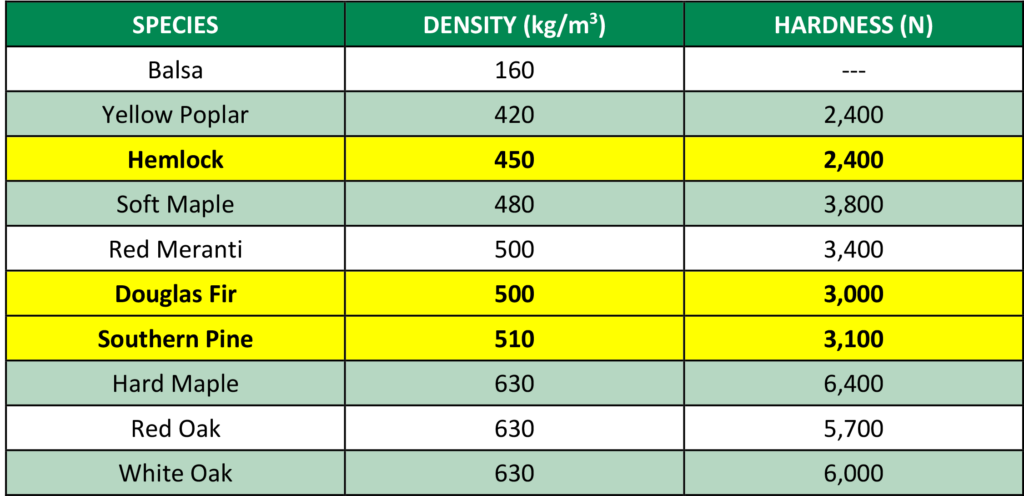
It’s a common misperception certain species of softwoods are “softer,” or less dense, than hardwood species.
But hardness and density are not relevant for classification.
Species classified as softwoods (coniferous) are characterized by cones and needles; species classified as hardwoods (deciduous) are characterized by broad leaves.
As the table above shows, softwood species Hemlock, Douglas fir, and Southern Pine are harder and denser than many hardwood species.
So how does this density and hardness help builders? Here are two key areas:
- Millwork Stock and Furniture: Southern Pine has superior qualities for machining, fastener-holding and finishing that makes it suitable for use in a wide range of trim and industrial applications. Many manufacturers of mouldings, stepping, ladder stock, and door and window components rely on Southern Pine finish-grade material. Its strength and density makes it a premium choice for solid and upholstered furniture.
- Trusses: The open web configuration of metal plate connected wood trusses leaves plenty of room for plumbing, electrical, and mechanical runs. Other truss advantages include design flexibility, long spans, and speed of construction. Southern Pine’s high density and range of strength and stiffness properties make it the preferred lumber species for structural building components, including trusses. Component manufacturers have the option to choose strong Southern Pine grades that can reduce the amount of raw materials used in each truss.
Learn more by checking out the SFPA’s Southern Pine Use Guide by clicking here!